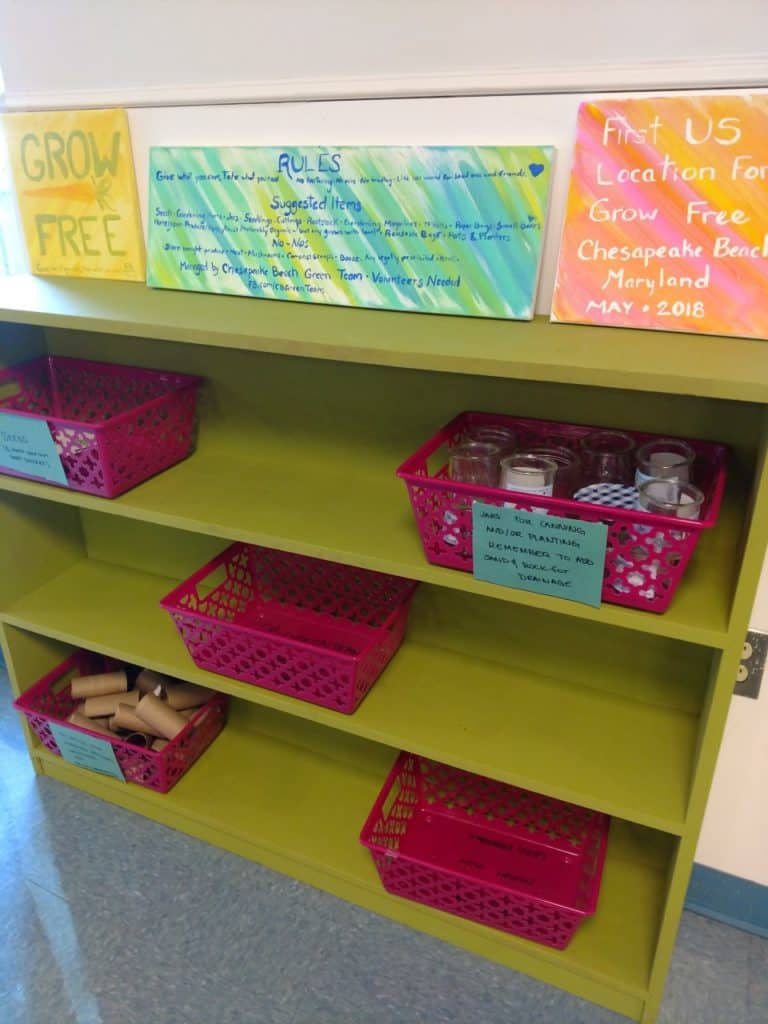Chesapeake Beach Recognized for Creating a Sustainable Town

By Krista Pfunder
A sustainable lifestyle is best for the Bay and its residents. That’s an idea that has one Bay community reaping rewards.
Environmental efforts by Chesapeake Beach have earned the town a Sustainable Maryland Award from the University of Maryland.
“Sustainability is woven into the fabric of our town,” says Patrick “Irish” J. Mahoney, the town’s mayor. “Our proximity to the Bay serves as a daily reminder of the importance of sustainable initiatives, outreach and education to expand our efforts.”
The University awards certifications and re-certifications annually. “Towns must apply for re-certification every three years,” says Mike Hunninghake, program manager for the University’s Sustainable Maryland program.
To be designated as sustainable by the college, the town had to meet several criteria: community action, community-based food system, energy, greenhouse gas, health & wellness, local economies, natural resources, planning and land use.
Chesapeake Beach’s green team reviews and implements plans that improve sustainability and keeps neighbors informed.
“The green team completed training with the University of MD and developed detailed action plans,” says Holly Kamm Wahl, Chesapeake Beach
town administrator. “The team maintains community outreach through the town website and a green team Facebook page.”
Some of the noteworthy improvements are things like the town’s Grow Free Shelf, which allows community members to drop off items to be used for gardening or that promote healthy eating. Seeds, seedlings, gardening magazines, homegrown herbs or vegetables can be dropped off for community sharing.
Other sustainable efforts that caught the program’s attention include energy auditing to improve public spaces and buildings and the town’s opioid abuse awareness coalition group.
Showcasing its natural resources is another way the town earns points for sustainability. Chesapeake Beach held geology walking events highlighting the Bay and the creatures along its shores and in its waters—such as oysters.
“The Chesapeake Beach Oyster Cultivation Society grew 110,000 oysters—at a 68 percent survivability rate in 2019; an 80 percent survivability in 2018 and 80 percent survivability in 201 —which were moved to the Old Rock Reef,” Wahl says. “A survey of the reef showed that we have a very healthy and growing oyster population of more than 800,000 oysters. We recycled approximately four tons of oyster shells.”
And the town brought those efforts into the classroom.
“The Chesapeake Beach Oyster Cultivation Society hosted over 1,400 fifth grade students using Chesapeake Beach as their learning platform,” Wahl says. “Their teachers and chaperones from eight Calvert County elementary schools came for the annual oyster education field trips on the Chesapeake Beach Railway Trail. Student scientists measured and counted oyster spat and monitored water quality in Fishing Creek.”
This year, 10 towns in Maryland, in addition to Chesapeake Beach, were recognized for their sustainable efforts: Bel Air, Berwyn Heights, Boonsboro, Frostburg, Greenbelt, Landover Hills, Mount Airy, Riverdale Park, Takoma Park and University Park.
“Towns got creative with COVID,” Hunninghake says. “Mount Airy took over a disused parking lot, took their park benches from some parks, and created outdoor dining area for restaurants. Riverdale Park created food security projects, including Farmer’s Market Dollars, which residents could receive and apply to purchases at farmer’s markets, as well as the Bountiful Buckets program, where residents who did not have a yard could request a garden in a box.”
